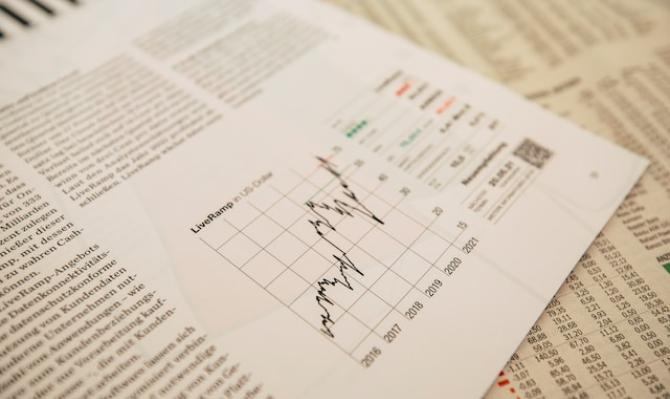The central banks, at the helm of a more volatile environment
2018 has been an intense year in the financial markets: volatility has rebounded to levels not seen since 2015, there have been multiple episodes of stock market corrections, and risk premiums (both sovereign and corporate) have surged. This picture is in stark contrast to the much more contained volatility seen in 2017 and has been the result of the tightening of monetary policy, led by the Fed. This, in turn, has put the pockets of vulnerability that have accumulated in recent years under the spotlight (such as the high level of global debt and the high valuations of some financial assets). In September, following another rate hike by the Fed, the international press announced «the end of accommodative monetary policy». In this dilemma, we must consider 2019 by analysing the outlook for the monetary policy of the two major central banks, the Fed and the ECB, and the financial conditions of their economies.
US: the Fed faced with some unusual financial conditions
Delving into more detail in the case of the US, in 2015 the Fed began a strategy of gradual increases in interest rates as part of the process of normalising its monetary policy, which had been extraordinarily accommodative in the years following the Great Recession. Nevertheless, the increase in official interest rates, as well as the reduction in the size of the central bank’s balance sheet, has not translated into any significant tightening of the country’s financial conditions to date. This is highlighted by the financial conditions index (FCI) produced by the Fed of Chicago, which consists of more than 100 variables that affect the cost of capital, investment decisions and other measures of credit risk.1 Historically, this indicator has maintained a strong relationship with the official interest rate set by the Fed. Lately, however, the index has stood at levels very similar to – or even below – those seen in 2014 (when rates stood at practically 0% and the central bank had not yet begun to reduce its balance sheet). This is because credit spreads remain restricted, credit continues to be accessible and the impact of the recent stock market corrections has been moderate.
According to the historical relationship between the FCI and the official interest rate, the FCI should be well above its current level. The decoupling of these two indicators raises a number of possible scenarios. On the one hand, we could see how the financial conditions are gradually increasing without significantly disrupting economic activity. On the other hand, there are other scenarios which could have more damaging consequences for the US economy. These include the possibility of a sudden tightening of financial conditions or, on the contrary, conditions remaining highly accommodative despite the increase in official interest rates. We analyse these scenarios below.
According to our econometric estimates, if financial conditions were to suddenly recover their historical relationship with the official interest rate, economic activity in the US would be adversely affected. Specifically, as we can see in the first chart, the quarter-on-quarter growth of the country’s GDP would fall by around 1 decimal point each quarter for at least one year. This would be accompanied by various effects for the financial sector, such as an increase in the NPL ratio.
In the other scenario, with financial conditions remaining at excessively low levels and immune to the Fed’s rate hikes, such a turn of events in an economy that is in a mature phase of the cycle –the unemployment rate is currently its lowest in the past 50 years – would raise a not-so-insignificant risk of overheating, which could begin to manifest itself with significant inflationary pressures. Normally, situations involving overheating precede recessions, because the economy is growing at rates that are unsustainable in the long term, leading to bubbles in some markets, among other consequences. To avoid this situation, the Fed is insisting on its current strategy of gradual interest rate hikes, although President Donald Trump has expressed his opposition. Luckily, the US central bank’s independence is not in question, and the decisions that will be taken over the coming quarters will continue to be geared towards the normalisation of monetary policy.
Europe: faced with the reorientation of the ECB
Shifting the focus to Europe, domestic demand looks set to be the main driver of growth in 2019, and despite the net asset purchases being brought to an end, the ECB will continue to favour accommodative financial conditions. It will have two major levers to do this: the size of its balance sheet and the management of expectations.
The ECB has repeatedly indicated that it will maintain its balance sheet at its current size for a long period of time. Given that the balance sheet tends to decline in size under its own inertia (due to the bonds purchased reaching maturity), the ECB will continue to acquire assets in significant quantities through its reinvestments (see second chart). Moreover, the very act of keeping its balance sheet stable will continue to provide support for an environment of relatively contained interest rates and accommodative financial conditions. The reason for this is that, as the available evidence shows, the asset purchase programmes have a greater effect on financial conditions through their stock effect (the total volume of assets acquired) than through the monthly flows of purchases. As studies that analyse the macroeconomic impact of the programmes show, this is well illustrated by comparing the notable reaction in financial conditions when the central bank announces the total size of its asset purchase programme, compared to the limited movement observed in the market on the day the central bank completes a purchase.
Looking ahead to 2019, the ECB's own estimates suggest that a sufficiently large amount of debt has been withdrawn from the market such that the financial conditions will be relatively unaffected when the net purchases are brought to an end. To understand why, we must bear in mind that some bond owners are less willing to sell than others. Initially, the Eurosystem purchased the bulk of the assets from players with a low reserve price (i.e. who were more willing to sell), such as non-resident investors. However, as bonds became scarcer, it resorted to buying from vendors who were less willing to sell, such as pension funds and insurance companies. Nevertheless, if these vendors have a greater preference for these assets (for example, because they want to hold less risky assets with longer-term maturities on their balance sheets), it is likely that in the event of new issues of public debt, these same institutions will be willing to acquire the assets at relatively higher prices (i.e. without requiring substantially higher interest rates). This favours stable and relatively low interest rates, even in the absence of net purchases by the ECB.
Furthermore, the ECB’s own communications strive to avoid sudden adjustments to market rates by managing expectations: that is why they spell out their intention to maintain interest rates at their current level at least through the summer of 2019. This approach will probably evolve with the economic scenario, and in 2019 the communications will also have to deal with the renewal of a portion of the ECB’s leadership. Mario Draghi, the president, will end his term of office on October 31st. They must also find a substitute for the ECB’s current chief economist, Peter Praet, whose term ends on May 31st , as well as for Benoît Cœuré (whose term ends on December 31st). Although the most likely candidates are those in favour of maintaining the status quo,2 managing these changes will be important in order to prevent them from being perceived as abrupt adjustments to the future evolution of monetary policy.
With these tools, the ECB will continue to favour an accommodative environment. Nevertheless, the scenario will have other determining factors that could tighten financial conditions more than desired. These factors include the economic consequences of geopolitics (such as Brexit, tensions between the EU and Italy, and the trade tensions with the US), the risk tolerance of the markets and the contagion that could be generated by a tightening of global financial conditions.
In short, the US and the euro area are at different stages of their financial cycles: while the Fed’s monetary policy is close to becoming neutral or even restrictive, the ECB remains in clearly accommodative territory. However, to some extent, both are facing a common risk: the decoupling between their monetary policy and the financial conditions. The two institutions will try to manage their tools carefully, in order to facilitate a gradual adjustment of the financial conditions in the US and, in the case of the euro area, to keep them in accommodative territory.
Adrià Morron Salmeron and Ricard Murillo Gili
CaixaBank Research
1. High values of this indicator suggest that financial conditions in the US are restrictive, which slows economic growth, while low values indicate that the financial environment is accommodative. For more information, see «How financial conditions are withstanding tighter monetary policy» in the MR03/2018.
2. The president of Bundesbank, Jens Weidmann, who has repeatedly and publicly criticised the policies led by Draghi, was favourite in the early stages under the premise that the ECB has never had a German president. However, precisely because of his strong opposition to the ECB’s decisions, he appears to have lost support in favour of less radical candidates, such as the governor of the Bank of France, François Villeroy de Galhau.





